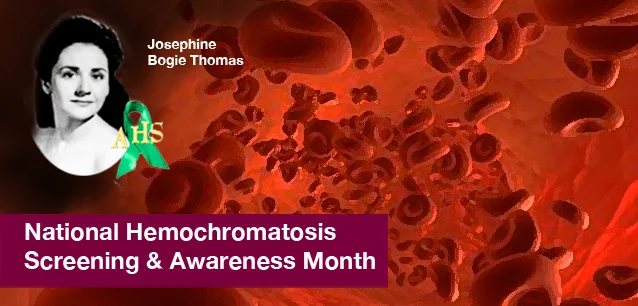 AD
AD
Today is: November 14
Scroll to explore events active on this date.
LEEP INK FEATURES

August is Appropos
A toddler playing in the fountain at a park in Santa Fe, New Mexico—Photo LD Lewis. In August, we live through the Dog Days of Summer. It's hot and often humid, and those ...

September is Sassy
Can you hear that sigh of relief from parents worldwide? Yes! September marks the return of students to school, a global phenomenon. Preparations for the ACT and SATs begin earnestly for ...

OOH LA LA, October
October is the busiest month for events, with 5% more happening than in May, the second most eventful month. Sailing enthusiasts will be glued to the finals of this year's Am...
About National Hereditary Hemochromatosis Genetic Screening and Awareness Month
Ends: May 31, 2023
DESCRIPTION:
The American Hemochromatosis Society (AHS) champions National Hereditary Hemochromatosis Genetic Screening and Awareness Month in May; it previously ran in July. Canada conducts a similar campaign within their borders.
National Hereditary Hemochromatosis Genetic Screening and Awareness Month was founded in 1998 by Josephine Bogie Thomas, who succumbed to complications from the disease in 1999. AHS seeks to raise awareness and encourage people to get tested for Hereditary Hemochromatosis (HH), commonly called iron overload disease, iron storage disease, or genetic iron poisoning.
The Centers for Disease Control and Prevention lists Hereditary Hemochromatosis as America's most common genetic disease. One in eight people, or 33 million Americans, are carriers of the disease, and most don't know it. Mutations of the disease can manifest as full-blown Hereditary hemochromatosis. It can affect anyone, men, women, and children at any stage of life affect men, women, and children at any age.
Hereditary hemochromatosis is an inherited disorder that causes the body to absorb too much iron from the diet. The excess iron is then stored in various organs, such as the liver, heart, and pancreas, potentially leading to life-threatening conditions like liver disease, heart problems, and diabetes.
Mutations in the HFE gene cause the most common form of hereditary hemochromatosis. Early symptoms of the disorder may include joint pain, fatigue, and weakness. If left untreated, it can result in more severe health issues, including liver cirrhosis, heart failure, and diabetes. Early detection and treatment can help prevent or reduce complications.
Genetic screening for hereditary hemochromatosis is crucial, particularly for individuals of Northern European descent, who are more likely to carry HFE gene mutations. Screening involves a blood test for elevated iron levels and specific gene mutations. If the condition is diagnosed early, treatment can be as simple as regular blood donations or therapeutic phlebotomy to remove excess iron from the body.
VIDEOS
SUPPORTING DOCUMENTS
ADDITIONAL IMAGES
Where would you like to go now?
 AD
AD





/footer-logo.svg)
